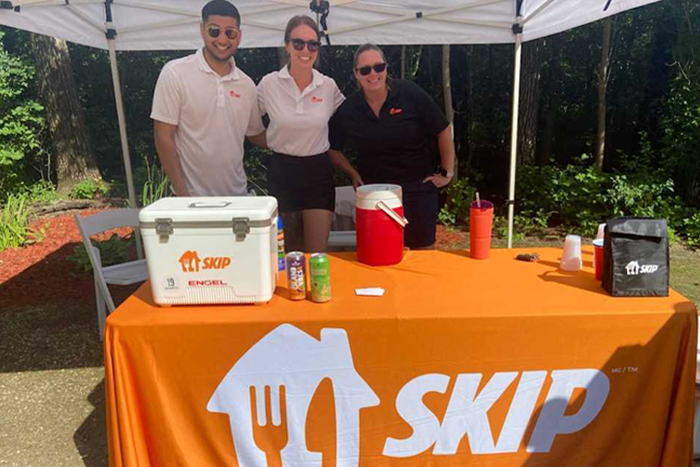Fraud is an unfortunate risk of doing business, any kind of business. For restaurants, that usually comes in the form of false orders, credit card fraud, refund fraud and fake accounts. If left unchecked, these fraudulent moves can cause massive financial and operational problems for restaurants. And that’s not something Skip takes lightly. We use a number of high-level protection services and we have an entire team dedicated to customer fraud. Here are the layers of protection that happen behind the scenes to help protect your business.
Layer 1: Aside from their email address and phone number, we collect additional info from the customer to make sure the right person is connected to the right credit card.
Layer 2: We have a system in place that ensures people are making orders from where they actually live and not from a foreign country.
Layer 3: We have another system in place that determines if someone is using a compromised user ID and password to log into accounts that don’t belong to them.
Layer 4: We crosscheck the information to ensure that the credit card being entered on the file is valid and has not been reported as stolen, for example.
Layer 5: This is the big one. We use a powerful third-party, state-of-the-art antifraud tool as part of the ordering and payment process. The system uses machine-based learning to examine customers’ behaviour—order frequency, order size, their location, time of day, and more—to estimate how “risky” the order is. Any order deemed too risky is rejected before it’s even placed. Also, each customer gets a risk score and they are assessed for future orders based on that score.
Layer 6: We send all transactions to 3-D Secure (that requires customers to complete an additional verification step with their card issuer when paying. They confirm that it is a valid transaction and assume liability for any chargebacks (if they’ve deemed the payment as good to go).
Layer 7: The companies that process the credit card transactions perform their own additional protection checks.
What happens to the fraudulent customer?
Once they’re caught, the fraudster gets a message from customer care refusing that refund and any other refunds in the future. The system also detects any new accounts that person tries to create and rejects them as well.
What should you watch out for?
- More refunds than usual: If you’re noticing you’re getting a lot more refunds than you normally do, that’s a red flag. For example, let’s say around 2% of all orders typically result in a refund. So for any one person, you wouldn’t expect to see more than 2% of their orders getting refunded. If someone has 5% or even 10% of their orders getting refunded, they may not set off alarm bells. But if someone gets half of their orders refunded over a period of time, there’s reason to be suspicious.
- A sudden increase in orders: A drastic increase from the norm is usually a good sign that someone is doing something fraudulently. For example, if you’ve gotten 5 orders a day for the last month and all of a sudden it goes up to 30, that’s a big red flag. Also keep an eye out if you’re seeing multiple orders coming from the same house. Remember—if you suspect fraudulent orders are being made at your place of business and you choose to do nothing about it, you could face a withholding of payments and ultimately, removal from the network.
If you notice questionable activity or you feel like something’s off, trust your gut and flag it with your Territory Manager as soon as possible to get Skip on the case. Your protection is our number one.





